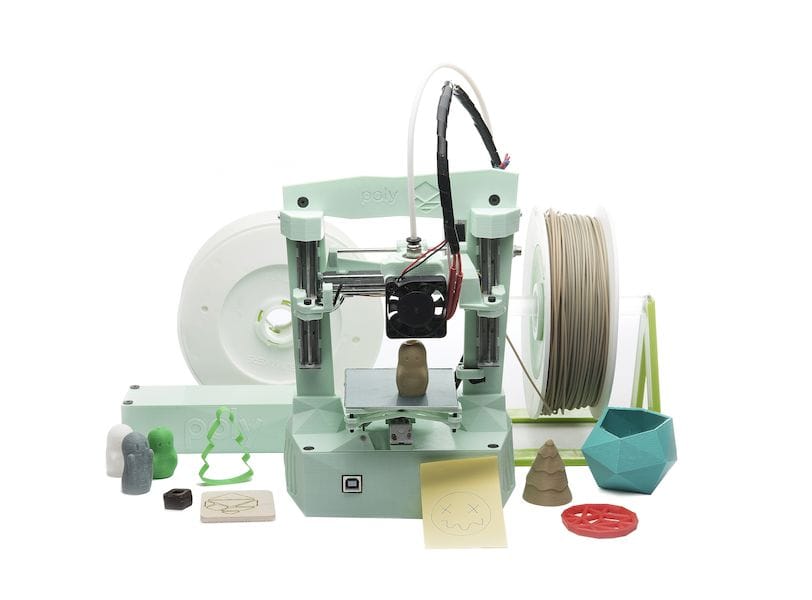
We’re looking at the upcoming Poly 3D printer.
The desktop 3D printer will be produced by Italy-based startup Poly, who are located on a hilltop just outside of Naples.
This device is not yet released, but the company explains they intend to launch a crowdfunding campaign on Kickstarter in the near future and hope you sign up for notifications when the do so.
We don’t yet know the price of the Poly, but from the looks of things it would appear to be a lower-cost desktop 3D printer. But that is an extraordinarily congested market and successful manufacturers must distinguish themselves notably in order to attract business.
That’s done either through features or a rock-bottom price. Pricing is a factor typically challenging for Western companies to beat, as there are plenty of low-cost Asian manufacturers already pouring out tens of thousands of machines at low cost.
Thus, Poly must compete on features, and so they have.
There are two distinguishing features about the Poly 3D printer. First, it is a multitool machine. The motion system is necessary for 3D printing, but it is re-used to enable several different functions, including:
- A paste extruder, where Poly says you can 3D print chocolate objects, for example
- A laser, which can be used to engrave 2D objects
- Drawing, in which a pen is mounted on the motion system and can mark 2D patterns
Combined with the core 3D printing functions, this machine could perform four different making processes.
However, we are usually not fond of multitool machines as it is extremely challenging to produce a machine that can adequately perform in all functions. Usually the lasers in such systems are woefully underpowered, leading to extremely long engraving jobs and an inability to cut almost any material. The Poly’s laser is only a single watt of power, which, if you’re not familiar with laser cutters, is extremely low power. The result is that in many cases the multitool machine is almost always used for 3D printing and the extra functions are rarely engaged.
But multitool functions are not the only distinguishing feature on the Poly 3D printer. The machine also has what I might call an “eco profile”.
This is a series of features and functions that, in aggregate, could make the machine to be considered eco-friendly.
First, the machine’s non-metal / electronic parts are made from PHA material, a thermoplastic that is recyclable.
Poly is also open source, enabling everyone to make their own – although I’m sure the company would hope they are bought through them.
They’ve also made the Poly portable – and apparently battery powered. The machine’s WiFi and Bluetooth connectivity allow you to start jobs wirelessly, but once engaged the GCODE file is stored securely on an included SD card, allowing disconnection to take place.
This is an interesting combination of features that is bundled together at (presumably) a low price. We’ll soon see the pricing levels the company hopes to will succeed.
And we’ll also see if this particular combination of features is attractive to a wider market, especially in light of all the competitive products available.
Via Poly

